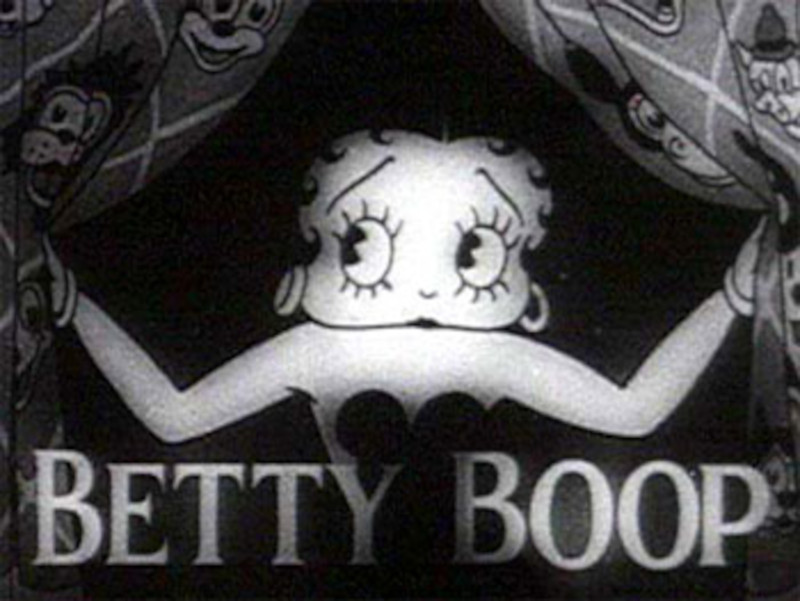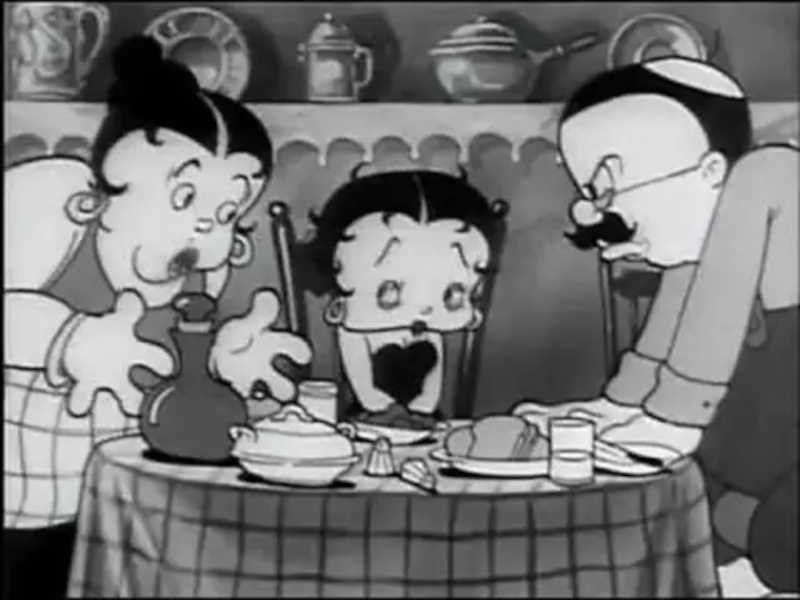Betty Boop has been charming legions of fans since the 1930s, and she remains one of the most successful cartoon stars in the world. However, the "boop-oop-a-doop" girl was never intended to be a star. She was only created to be the love interest of Talkartoon cartoon character called Bimbo. Her rise to fame is an interesting story. Read on if you want to learn more.

Betty Boop: Still Looking Good After 90 Years
Betty Boop has been charming legions of fans since the 1930s and there's a something about the "boop-oop-a-doop" girl that allows her to maintain ongoing appeal. In fact, she's so popular there is such a huge choice of Betty Boop memorabilia and collector's items available than Betty Boop fans the world over are spoiled for choice.
It is hard to say what it is that has enabled Betty Boop to retain her ongoing popularity, but one reason might be that, with her big eyes and shapely legs, Betty is extremely sexy for a cartoon character. And what about that little black dress? In 1994, the actress Liz Hurley wore a black dress to an awards ceremony. She looked great and suddenly every girl had to have a little, black dress of her own to wear. Fashions come and go. They always have and they always will, but sorry Liz, Betty was doing it first and she beat you to it by about seventy years.

Bimbo Meets Betty Boop
Why Betty Boop?
So, why Betty Boop? What's her story? The history of Betty Boop is rather interesting and the gal with the boop-oop-a-doop certainly became a much bigger hit with audiences than her creators had ever anticipated. Everyone knows what a big success Mickey Mouse was (and is) for the Disney Studios. No one was more aware of this than the people at Fleischer Studios and they wanted something of their own that would be as popular as Mickey. Their answer was a cartoon dog named Bimbo who starred in their Talkartoon series.
So, why Betty Boop? What's her story? The history of Betty Boop is rather interesting and the gal with the boop-oop-a-doop certainly became a much bigger hit with audiences than her creators had ever anticipated. Everyone knows what a big success Mickey Mouse was (and is) for the Disney Studios. No one was more aware of this than the people at Fleischer Studios and they wanted something of their own that would be as popular as Mickey. Their answer was a cartoon dog named Bimbo who starred in their Talkartoon series.
Of course, Bimbo takes one look at Betty, his heart tries to break free of his chest, and he begins boop-oop-a-dooping back to her instead of tending to his customers, one of which is so hungry that he has just eaten the leg from his table. Betty is just a nameless singer in Dizzy Dishes and is a long way from being the Betty Boop who we now, know and love, but even as a dog there was still something special about the girl with the boop-oop-a-doop.
From such simple humble beginnings, a star was born!
Boop-Oop-a-Doop!
But where did Betty's famous boop-oop-a-doop come from?
The answer is rather complicated. I could just say, Helen Kane. But I won't. Instead, I will tell you a story and let you formulate your own opinions about it.
Helen Kane was a 1920s star of stage and screen and Paramount's very own boop-oop-a-doop girl. She had short, curly hair and big, round eyes. Sound familiar? Sadly, Helen's popularity was on the wane by the 1930s and although she had once been a star in her own right she found that people who were unfamiliar with her work believed that she was just a Betty Boop imitator.

1930s Actress Helen Kane
In 1934 Helen launched a major lawsuit against Max Fleischer and Paramount studios (who were by that time very much on the Betty Boop bandwagon). Unfortunately for Helen, it was pointed out in court that her looks were not unique. Like Betty Boop, Helen bore a close resemblance to another famous star, Clara Bow. It was also discovered that Helen's unique singing style was not, perhaps, as unique as it at first seemed and it was suggested that she may have copied a black performer, by the name of Baby Esther, who she once saw using a similar style in a Harlem nightclub.
So here we are, back to that same old question, where did Betty get her boop-oop-a-doop from? You can make up your own mind about that, I certainly have, and while you are busy sitting and thinking about it, you might want to take a good, long look at the picture of Helen Kane.
Boop-oop-a-doop!
Helen Kane - If I Knew You Better
The Men Behind Betty Boop
No history of Betty Boop would be complete without paying a passing nod to the people who created her and it's probably true to say that there were a few men responsible for the creation of Betty Boop. The first two were the brothers Max and Dave Fleischer, who produced the Talkartoons series, and the third was the animator Myron 'Grim' Natwick. The Fleischer brothers were keen to have their own animated star to compete with Disney's Mickey Mouse and they chose Natwick to put the dream on paper and bring it to life.
After his success with Betty, Natwick was a much sought after animator and it was not long before he left Fleischers and went to work for the former Disney animator Ub Iwerks, before going on, later, to work for Disney himself. With Natwick no longer playing on the Fleischer team, Betty fell into the gentle hands of Berny Wolf, Seymour Kneitel, Roland Crandall, and Willard Bowsky, who applied some fresh polish to the idea and brought the little lady up to scratch. By the time the cartoon Any Rags came out, in 1932, Betty looked completely human. The floppy, dog ears had become ear rings and her dog-like nose was changed into the button nose that we all know and love today.
Betty's first ten outings were always as a supporting character: a flapper who had a big heart, but not a lot between the ears. She wasn't called Betty either; that came later. She was Nancy Lee or Nan McGraw. Many people believe that Betty received her name in the 1931 Screen Songs cartoon Betty Coed. There are those, however, who dispute this and it is a bit of a grey area. Something that cannot be disputed though is that fact that by 1932 Betty Boop was the star of Talkartoons and was given her own series, which began with Stopping the Show, and the little lady has been a show stopper ever since.

Betty in a scene from Minnie the Moocher (1932)
The Voice of Betty Boop
Over the years a few people have given Betty Boop her distinctive voice, but it was actress, Mae Questel, who Boop-Oop-a-Dooped the most.
Mae was the voice of Betty Boop from 1930 until 1939; the years when most of the cartoons were made. Helen Kane did, however, step in and do the voice for the 1933 cartoon Popular Melodies.
Rhythm on the Reservation was produced in 1939 it was to be over forty years before Betty put in another appearance. When The Romance of Betty Boop was released in 1985 Betty's voice was provided by the very versatile Desiree Goyette. I say versatile because, apart from working as a voice-over artist, Goyette is also a singer, composer, and lyricist. Further information about Desiree Goyette can be found at Wikipedia.
Then, in 1988, Mae Questel returned to do Betty's voice, once again, and for the final time, in the film Who Framed Roger Rabbit. It should be noted though, that Questel was far from idle when she was not giving voice to Betty's words. She was a very busy lady and, amongst other things, she was the voice of Popeye the sailor's girlfriend Olive Oyl. Questel provided Popeye's "goyl" with words to whisper in his ear from 1944 until the early 1960s.
Betty Boop's last appearance was in 1989, the same year that Mae Questal died. The film was called Betty Boop's Hollywood Mystery and Melissa Fahn provided the vocal cords on this occasion.
Is This the End?
Will there be anymore Betty Boop cartoons? Only time will tell, but even if no more cartoons are made Betty has boop-oop-a-dooped to her legions of fans for over eighty years. That's a lot longer than many flesh and blood actors can manage and Betty must surely be the undisputed Queen of Cartoon Land. The little lady has earned her place in history and I have no doubt that in a hundred years she will still reign supreme.
Betty Boop - Swat the Fly (1935)